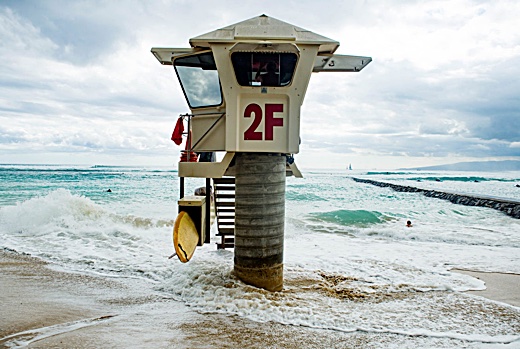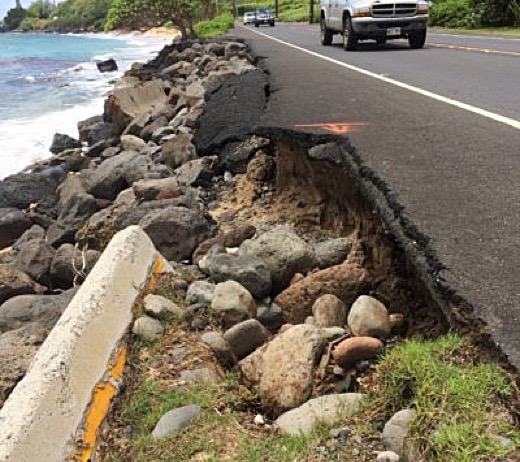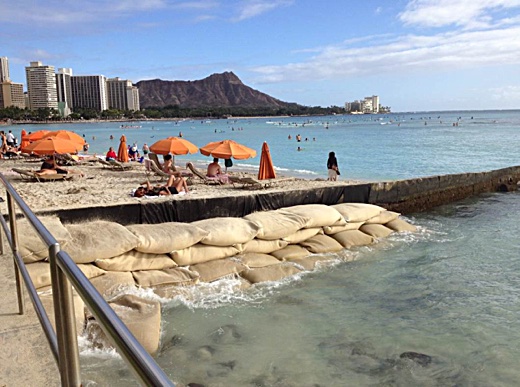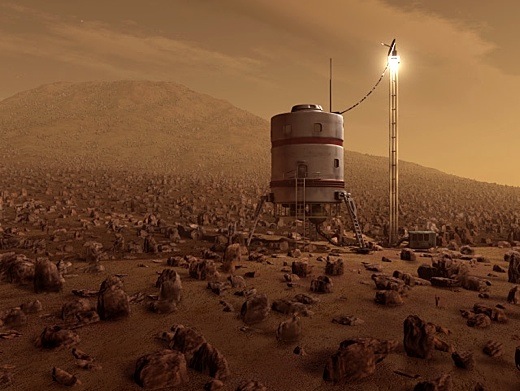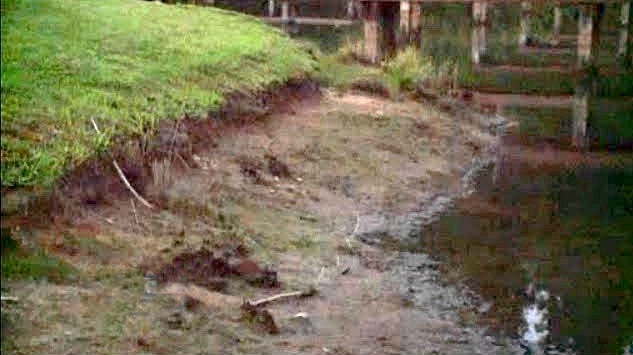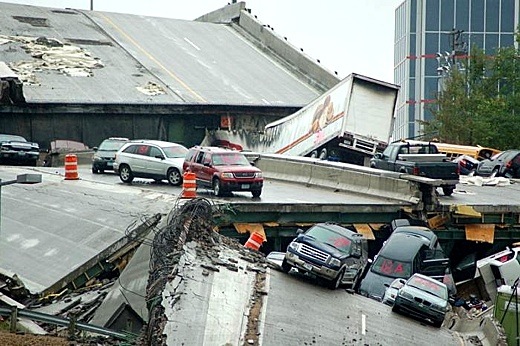By Richard Heinberg on 28 September 2017 for Post Carbon Institute-
(http://www.postcarbon.org/puerto-rico-is-our-future/)
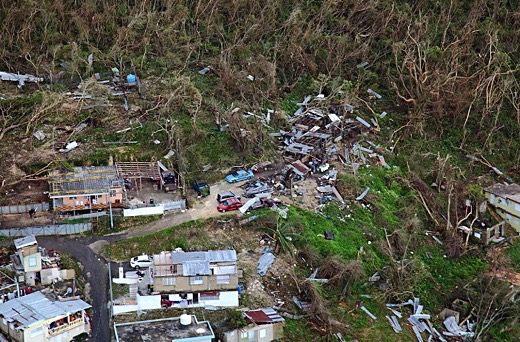
Image above: Aerial photo of damage from Maria to hillside homes in Puerto Rico after hurricane Maria destroyed much of the infrastructure of the island. From original article.
[IB Publisher's note: Inike did not do as much damage to Kauai as hurricanes Irma and Maria (two category 4 storms) did to Puerto Rico in the last few weeks. Needless to say, Kauai pulled together and overcame major destruction to the island. But that was a different economic and environmental era. As James Kunstler pointed out here (http://islandbreath.blogspot.com/2017/09/in-murk.html), there is little to no backup support left.]
News reports tell of the devastation left by a direct hit from Category 4 Hurricane Maria.
Puerto Ricans already coping with damage from Hurricane Irma, which grazed the island just days before, were slammed with an even stronger storm on September 20, bringing more than a foot of rain and maximum sustained winds of at least 140 miles per hour.
There is still no electricity—and likely won’t be for weeks or months—in this U.S. territory of 3.4 million people, many of whom also lack running water. Phone and internet service is likewise gone. Nearly all of Puerto Rico’s greenery has been blown away, including trees and food crops.
A major dam is leaking and threatening to give way, endangering the lives of tens of thousands. This is a huge unfolding tragedy. But it’s also an opportunity to learn lessons, and to rebuild very differently.
Climate change no doubt played a role in the disaster, as warmer water generally feeds stronger storms. This season has seen a greater number of powerful, land-falling storms than the past few years combined. Four were Category 4 or 5, and three of them made landfall in the U.S.—a unique event in modern records.
Puerto Rico is also vulnerable to rising seas: since 2010, average sea levels have increased at a rate of about 1 centimeter (0.4 inches) per year. And the process is accelerating, leading to erosion that’s devastating coastal communities.
Even before the storms, Puerto Rico’s economy was in a tailspin. It depends largely on manufacturing and the service industry, notably tourism, but the prospects for both are dismal.
The island’s population is shrinking as more and more people seek opportunities in the continental U.S.. Puerto Rico depends entirely on imported energy sources—including bunker oil for some of its electricity production, plus natural gas and coal.
The Puerto Rico Electric Power Authority (PREPA) is a law unto itself, a monopoly that appears mismanaged (long close to bankruptcy), autocratic, and opaque. Over 80 percent of food is imported and the rate of car ownership is among the highest in the world (almost a car for each islander!).
To top it off, Puerto Rico is also in the throes of a debt crisis. The Commonwealth owes more than $70 billion to creditors, with an additional $50 billion in pension obligations.
Puerto Rico’s government has been forced to dramatically cut spending and increase taxes; yet, despite these drastic measures, the situation remains bleak. In June 2015, Governor Padilla announced the Commonwealth was in a “death spiral” and that “the debt is not payable.”
On August 3 of the same year, Puerto Rico defaulted on a $58 million bond payment. The Commonwealth filed for bankruptcy in May of this year after failing to raise money in capital markets.
A shrinking economy, a government unable to make debt payments, and a land vulnerable to rising seas and extreme weather: for those who are paying attention, this sounds like a premonition of global events in coming years.
World debt levels have soared over the past decade as central banks have struggled to recover from the 2008 global financial crisis. Climate change is quickly moving from abstract scenarios to grim reality.
World economic growth is slowing (economists obtusely call this “secular stagnation”), and is likely set to go into reverse as we hit the limits to growth that were first discussed almost a half-century ago. Could Puerto Rico’s present presage our own future?
If so, then we should all care a great deal about how the United States responds to the crisis in Puerto Rico. This could be an opportunity to prepare for metaphoric (and occasionally real) storms bearing down on everyone.
It’s relatively easy to give advice from the sidelines, but I do so having visited Puerto Rico in 2013, where I gave a presentation in the Puerto Rican Senate at the invitation of the Center for Sustainable Development Studies of the Universidad Metropolitana. There I warned of the inevitable end of world economic growth and recommended that Puerto Rico pave the way in preparing for it. The advice I gave then seems even more relevant now:
- Invest in resilience. More shocks are on the way, so build redundancy in critical systems and promote pro-social behavior so that people’s first reflex is to share and to help one another.
- Promote local food. Taking advantage of the island’s climate, follow the Cuban model for incentivizing careers in farming and increase domestic food production using permaculture methods.
- Treat population decline as an opportunity. Lots of people will no doubt leave Puerto Rico as a result of the storm. This represents a cultural and human loss, but it also opens the way to making the size of the population of the island more congruent with its carrying capacity in terms of land area and natural resources.
- Rethink transportation. The island’s current highway-automobile dominance needs to give way to increased use of bicycles, and to the provision of streetcars and and light rail. An interim program of ride- and car-sharing could help with the transition.
- Repudiate debt. Use aid money to build a sharing economy, not to pay off creditors. Take a page from the European “degrowth” movement. An island currency and a Commonwealth bank could help stabilize the economy.
- Build a different energy system. Patching up the old PREPA electricity generating and distribution system would be a waste of money. That system is both corrupt and unsustainable. Instead, invest reconstruction funds in distributed local renewables and low-power infrastructure.
In her book The Shock Doctrine, Naomi Klein described how free-market policy wonks and neoliberal economists—and the financial and corporate interests that back them—look for moments of crisis as opportunities to trap countries in a cycle of massive infrastructure projects, rising consumption, and debt. No doubt neoliberal vultures are readying to swoop down on Puerto Rico at this very moment with their brand of “aid.”
The government and people of the island will have some important choices to make in the coming weeks—whether to double down on infrastructure investments that lock them into a brittle and unsustainable way of life, or to break out in a different direction. They might take inspiration from Greensburg, Kansas—a town that was devastated by a powerful tornado in 2007 and chose to rebuild as “the greenest town in America.”
Obviously, the Puerto Rican people have immediate needs for food, water, fuel, and medical care.
We mainland Americans should be doing all we can to make sure that help reaches those in the throes of crisis. But Puerto Ricans—all Americans, indeed all humans—should be thinking longer-term about what kind of society is sustainable and resilient in this time of increasing vulnerability to disasters of all kinds.
.
